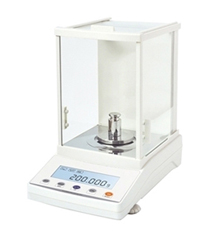Electronic Analytical Balance Price List
An electronic analytical balance is a precise and highly sensitive measuring instrument commonly used in laboratories for accurately determining the mass of substances with a high degree of precision. Unlike traditional mechanical balances, electronic analytical balances rely on electronic components, such as load cells and digital sensors, to provide accurate weight measurements.
Key features of electronic analytical balances include their ability to measure extremely small mass quantities, often down to micrograms, and their capacity to deliver results with high precision and readability. These balances are essential for a wide range of applications in scientific research, quality control, and various laboratory processes where accurate and reliable measurements are crucial. In order to better match your needs, we have listed a detailed ATO price list for you.
Electronic Analytical Balance Price
| Product Picture | Product Name | SKU | Price |
 |
200g Electronic Analytical Balance | ATO-EAB-200 | $790.52 |
| 300g Electronic Analytical Balance | ATO-EAB-300 | $801.32 | |
| 500g Electronic Analytical Balance | ATO-EAB-500 | $841.57 | |
| 600g Electronic Analytical Balance | ATO-EAB-600 | $870.15 | |
| 1000g Electronic Analytical Balance | ATO-EAB-1000 | $1,136.21 | |
| 1200g Electronic Analytical Balance | ATO-EAB-1200 | $1,219.56 |
Note: The prices in the above table are for reference only. If you need a discount or need to purchase in large quantities, please contact us.
Why do we need an electronic analytical balance?
We need electronic analytical balances for several important reasons:
- Precision: Electronic analytical balances provide highly accurate and precise measurements, allowing us to determine the mass of substances with extreme accuracy, often down to micrograms. This precision is essential for scientific research, quality control, and analytical applications where accurate measurements are critical.
- Speed and Efficiency: Electronic analytical balances offer faster results compared to traditional mechanical balances. This efficiency saves time in laboratory processes, making research and analysis more productive.
- Digital Readout: Electronic balances have digital displays that are easy to read and record. This reduces the risk of human error and simplifies data management, enhancing the reliability of measurements.
- Tare Function: The tare function allows us to zero out the weight of containers or tare weights, making it easier to weigh specific substances accurately and obtain net measurements.
- Calibration: These balances can be easily calibrated, ensuring their accuracy and reliability over time. Regular calibration is crucial to maintaining measurement integrity.
- Environmental Adaptability: Electronic analytical balances are constructed to minimize the influence of environmental factors like air currents and temperature changes, ensuring consistent and reliable results.
- Compact Design: They are typically compact in size, which saves laboratory space and makes them suitable for various settings.

